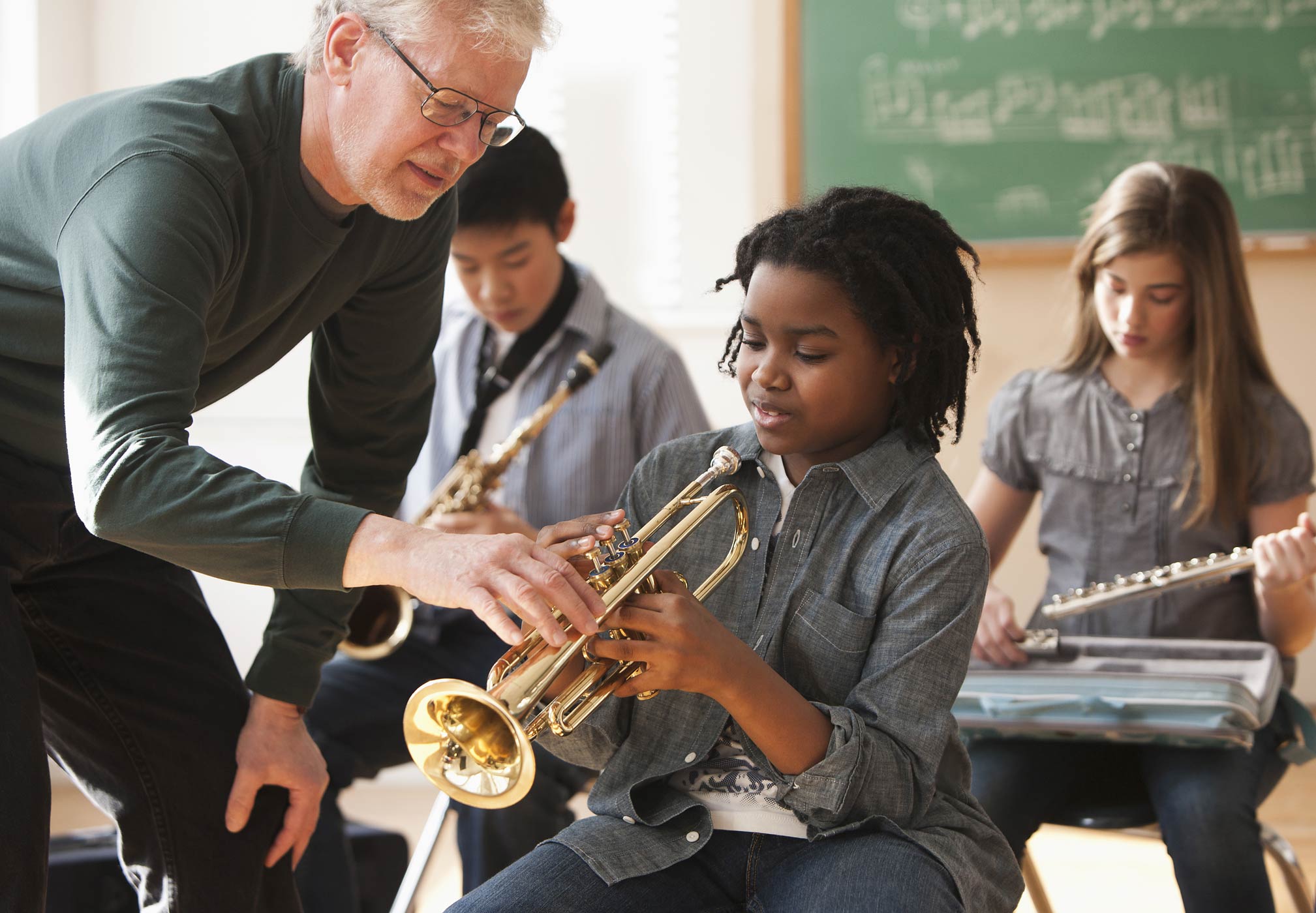
There’s little doubt that learning to play a musical instrument is great for developing brains.
Science has shown that when children learn to play music, their brains begin to hear and process sounds that they couldn’t otherwise hear. This helps them develop “neurophysiological distinction” between certain sounds that can aid in literacy, which can translate into improved academic results for kids.
Many parents probably read the above sentence and started mentally Google-ing child music classes in their local area. But if your kid doesn’t like learning an instrument or doesn’t actively engage in the class–opting to stare at the wall or doodle in a notebook instead of participating–he or she may not be getting all the benefits of those classes anyway.
A new study from Northwestern University revealed that in order to fully reap the cognitive benefits of a music class, kids can’t just sit there and let the sound of music wash over them. They have to be actively engaged in the music and participate in the class. “Even in a group of highly motivated students, small variations in music engagement — attendance and class participation — predicted the strength of neural processing after music training,” said Nina Kraus, director of Northwestern’s Auditory Neuroscience Laboratory, in an email to TIME. She co-authored the study with Jane Hornickel, Dana L. Strait, Jessica Slater and Elaine Thompson of Northwestern University.
Additionally, the study showed that students who played instruments in class had more improved neural processing than the children who attended the music appreciation group. “We like to say that ‘making music matters,'” said Kraus. “Because it is only through the active generation and manipulation of sound that music can rewire the brain.”
Kraus, whose research appeared today in Frontiers in Psychology, continued: “Our results support the importance of active experience and meaningful engagement with sound to stimulate changes in the brain.” Active participation and meaningful engagement translate into children being highly involved in their musical training–these are the kids who had good attendance, who paid close attention in class, “and were the most on-task during their lesson,” said Kraus.
To find these results, Kraus’s team went straight to the source, hooking up strategically placed electrode wires on the students’ heads to capture the brain’s responses.
Kraus’s team at Northwestern has teamed up with The Harmony Project, a community music program serving low-income children in Los Angeles, after Harmony’s founder approached Kraus to provide scientific evidence behind the program’s success with students.
According to The Harmony Project’s website, since 2008, 93 percent of Harmony Project seniors have gone on to college, despite a dropout rate of 50 percent or more in their neighborhoods. It’s a pretty impressive achievement and the Northwestern team designed a study to explore those striking numbers. That research, published in September in the Journal of Neuroscience, showed direct evidence that music training has a biological effect on children’s developing nervous systems.
As a follow up, the team decided to test whether the level of engagement in that music training actually matters. Turns out, it really does. Researchers found that after two years, children who not only regularly attended music classes, but also actively participated in the class, showed larger improvements in how the brain processes speech and reading scores than their less-involved peers.
“It turns out that playing a musical instrument is important,” Kraus said, differentiating her group’s findings from the now- debunked myth that just listening to certain types of music improves intelligence, the so-called “Mozart effect.” “We don’t see these kinds of biological changes in people who are just listening to music, who are not playing an instrument,” said Kraus. “I like to give the analogy that you’re not going to become physically fit just by watching sports.” It’s important to engage with the sound in order to reap the benefits and see changes in the central nervous system.
As to how to keep children interested in playing instruments, that’s up to the parents. “I think parents should follow their intuitions with respect to keeping their children engaged,” said Kraus. “Find the kind of music they love, good teachers, an instrument they’ll like. Making music should be something that children enjoy and will want to keep doing for many years!”
With that in mind, it’s not too late to trade in those Minecraft Legos, Frozen paraphernalia, XBox games, and GoldieBlox presents that you may have purchased, and swap them out for music lessons for the kids in your life.
For exclusive parenting content, check out our TIME for Family subscription. And to receive parenting news each week, sign up for our parenting newsletter.
More Must-Reads from TIME
- Why Trump’s Message Worked on Latino Men
- What Trump’s Win Could Mean for Housing
- The 100 Must-Read Books of 2024
- Sleep Doctors Share the 1 Tip That’s Changed Their Lives
- Column: Let’s Bring Back Romance
- What It’s Like to Have Long COVID As a Kid
- FX’s Say Nothing Is the Must-Watch Political Thriller of 2024
- Merle Bombardieri Is Helping People Make the Baby Decision
Contact us at letters@time.com